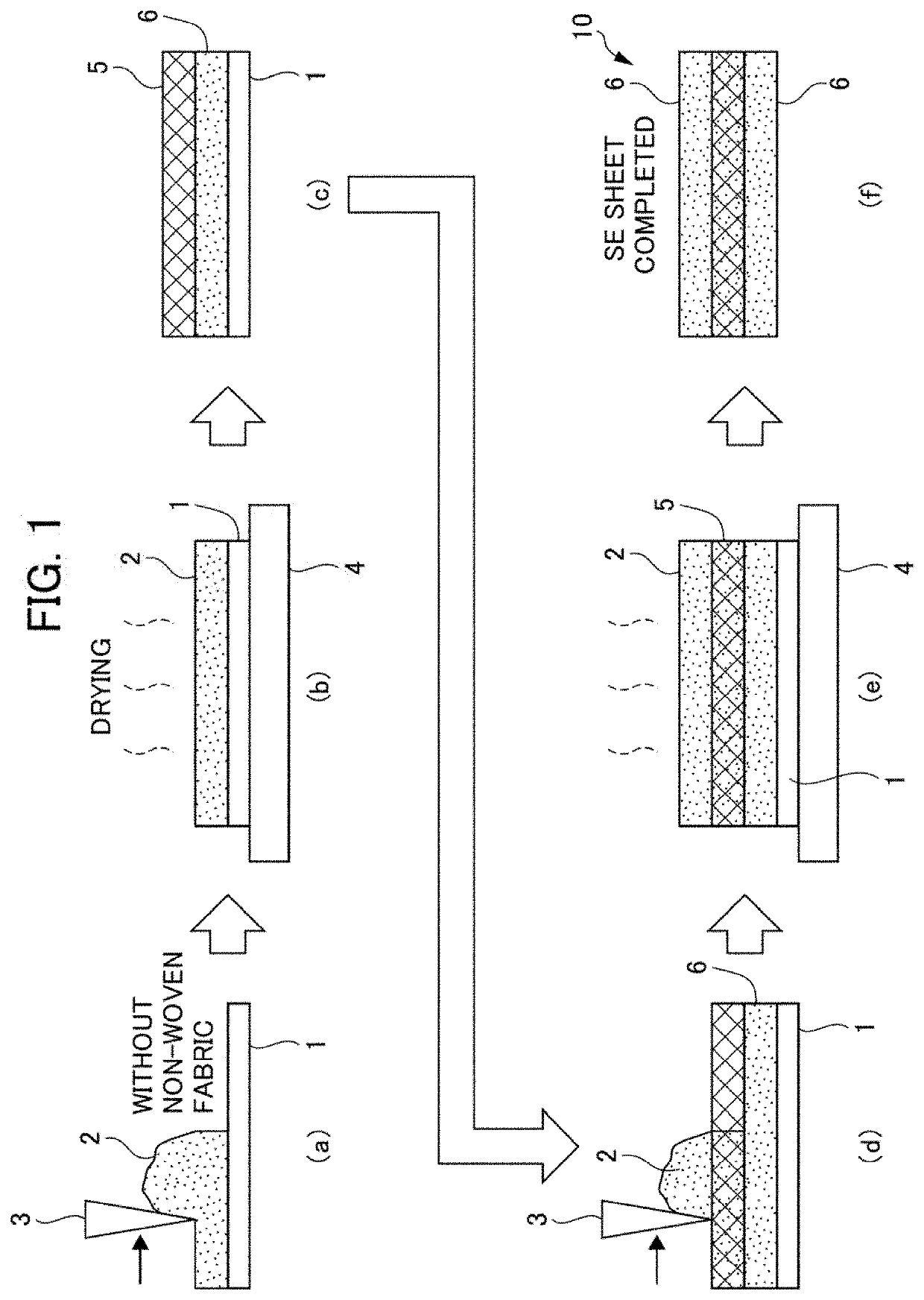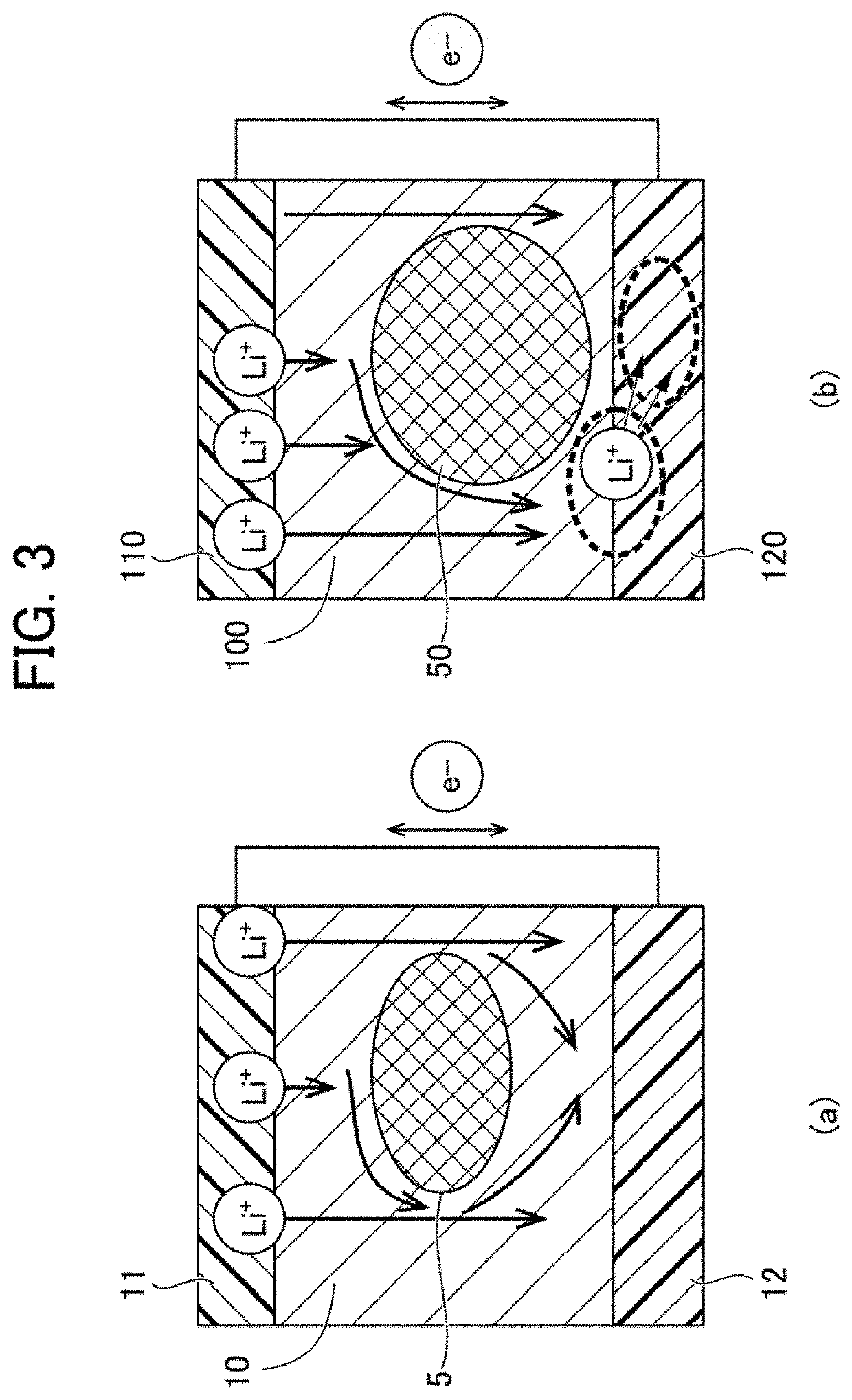Method of manufacturing solid electrolyte sheet, and solid electrolyte sheet
- Summary
- Abstract
- Description
- Claims
- Application Information
AI Technical Summary
Benefits of technology
Problems solved by technology
Method used
Image
Examples
examples
[0053]Next, examples of the present invention will be described, but the embodiment of the present invention is not limited to these examples.
example
Preparation of Solid Electrolyte Sheet
[0054]Slurry of a solid electrolyte was prepared by mixing the solid electrolyte with a solvent. A solid electrolyte layer was formed on the base by coating a removable base with slurry of the solid electrolyte and then drying it on a hot plate. Next, a non-woven fabric as a three-dimensional structure was placed on the top surface of the solid electrolyte layer, and the slurry of the solid electrolyte was applied again from the top of the three-dimensional structure. The work was then dried on the hot plate again and pressed after the base was removed, thereby yielding the solid electrolyte sheet according to the example. A plurality of solid electrolyte sheets of the example were prepared with different coating thicknesses of the solid electrolyte slurry, and used for the following evaluation tests.
Fabrication of Solid-State Battery
[0055]A solid-state battery for evaluation was prepared by stacking a positive electrode layer containing NCM as ...
PUM
 Login to View More
Login to View More Abstract
Description
Claims
Application Information
 Login to View More
Login to View More - R&D
- Intellectual Property
- Life Sciences
- Materials
- Tech Scout
- Unparalleled Data Quality
- Higher Quality Content
- 60% Fewer Hallucinations
Browse by: Latest US Patents, China's latest patents, Technical Efficacy Thesaurus, Application Domain, Technology Topic, Popular Technical Reports.
© 2025 PatSnap. All rights reserved.Legal|Privacy policy|Modern Slavery Act Transparency Statement|Sitemap|About US| Contact US: help@patsnap.com



